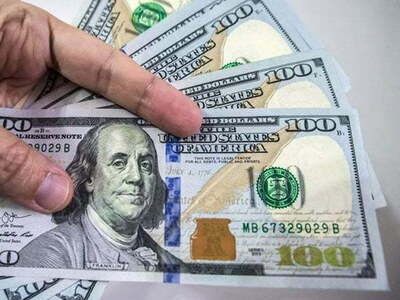Dollar Weakens Amid US-China Trade Uncertainty
NEW YORK: The dollar experienced a broad decline on Thursday as investor apprehension grew due to the lack of advancement in resolving the trade dispute between the United States and China. This reversal followed a brief period of optimism the previous day.
On Wednesday, U.S. assets, including the dollar, saw gains after President Donald Trump seemingly softened his stance on China and stepped back from earlier threats to dismiss the Federal Reserve chairman.
Treasury Secretary Scott Bessent mentioned independently that the current restrictions on U.S.-China trade were unsustainable. However, he stated that the U.S. would not take the initial step in reducing its tariffs exceeding 100% on Chinese goods.
However, by Thursday, these gains had diminished. China stated that there had been no economic and trade negotiations and urged the U.S. to eliminate all unilateral tariffs to truly resolve the issue. This statement left investors in a position similar to the start of the week regarding clarity on the matter.
The yen rose significantly, causing the dollar to decline by 0.71% to 142.395, remaining above the 140-mark it breached the previous week.
According to David Morrison, a strategist at Trade Nation, there was widespread anticipation of a de-escalation in the U.S.-China trade dispute.
He added that while Trump softened his tone and called for negotiations, China’s leadership has chosen to allow the Trump administration to handle its own issues.
The dollar has been significantly impacted by Trump’s fluctuating tariff policies, with a 4.8% drop observed in April alone. This decrease could potentially be its most significant monthly decline since November 2022.
Investors have been concerned by Trump’s verbal criticism of Fed Chair Jerome Powell regarding his reluctance to lower interest rates until justified by economic data.
According to LSEG data, the pullback from the dollar by investors is so significant that it is on track for its worst start to the year against a basket of currencies since the 1970s.
Karl Schamotta, chief market strategist at Corpay, noted that a nascent relief rally in markets is faltering as hopes for a thaw in the U.S.-China trade war unravel amid contradictory signals from officials. He added that the dollar is facing renewed selling pressure, Treasury yields are slightly decreasing, and equity futures are heading toward further losses at the North America open.
The Swiss franc rose and is currently at its strongest level against the dollar in over a decade due to substantial safe-haven flows this month. The U.S. currency decreased by 0.58% to 0.82565 francs.
The pound increased by 0.53% to $1.332. UK finance minister Rachel Reeves expressed confidence on Thursday that Britain could achieve a trade agreement with the United States.
Bitcoin also declined, tracking the dollar’s downward trajectory, falling 0.84% to $92,896. Meanwhile, Trump’s meme coin experienced a 33% surge overnight following online promotion of a gala dinner with the president for the top 220 buyers of the $TRUMP coin; However, it is still worth only about a quarter of its value at launch in January.



Comments (0)
No comments yet. Be the first to comment!
Leave a Comment